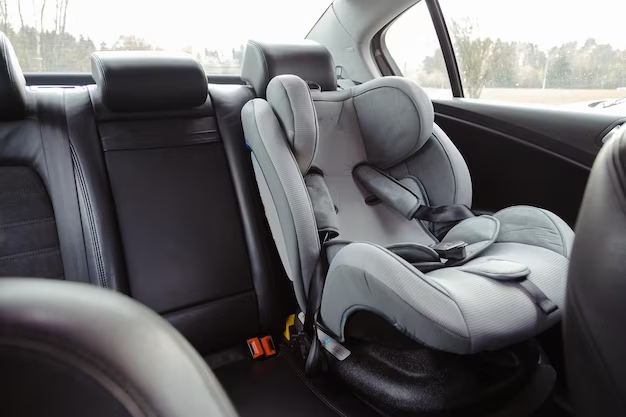In today’s fast-paced world, ensuring the safety of our precious children on the road is a responsibility we all share. To address this need, the R129 i-Size car seat regulation was introduced, setting a new standard for child safety in cars. This article will explore the features, benefits, and innovations behind the R129 i-Size newborn car seat, helping you understand why this choice is essential for parents and caregivers prioritizing safety.
Understanding the R129 i-Size Car Seat Regulation
The R129 (i-Size) child car seat standard, designed to improve on the older R44/04 regulation, introduces key updates for enhanced safety and usability:
- Height-Based Selection: Unlike R44/04, which categorizes seats by weight, R129 prioritizes height. This change allows for more precise seat choices, better fitting each child’s size.
- Extended Rear-Facing Travel: R129 i-Size car seats encourage rear-facing travel for children up to at least 15 months old, enhancing crash protection.
- Enhanced Side Impact Protection: R129 includes stricter side impact criteria, offering superior safety during side collisions.
- Simplified Installation: Installation is now more convenient, with both ISOFIX and 3-point seat belt options, allowing parents to choose the safest and most compatible method for their vehicle.
The Differences Between R129 and R44
To help you understand the improvements R129 brings to baby car seats, here’s a comparison of these regulations:
| Feature | R44/04 | R129 (i-Size) |
|---|---|---|
| Selection Criterion | Weight (kg) | Height (cm) |
| Rear-Facing Requirement | Rear-facing required up to 13 kg | Rear-facing required up to 15 months or 105 cm (approx. 4 years) |
| Impact Testing | Rear/front impact, 4 sensors (P dummy) | Includes side impact, 32 sensors (Q dummy) |
| Installation Methods | ISOFIX and 3-point seatbelt | ISOFIX or 3-point seatbelt, with clearer guidelines |
R129’s focus on height-based categorization and stricter testing reflects a significant leap forward in child safety, offering parents peace of mind.

Choosing the Right R129 i-Size Car Seat
Selecting the right R129 i-Size car seat involves critical considerations. Start by factoring in your child’s to ensure an appropriate fit. Assess installation compatibility with your vehicle, as not all seats work seamlessly in every car. Budget is a key determinant, with options available at various price points.
During installation, follow manufacturer guidelines meticulously for a secure fit. Lastly, prioritise maintenance and cleaning to keep the seat in top condition. By weighing these factors and adhering to installation and upkeep tips, you’ll secure a safe and comfortable journey for your child.

Why R129 i-Size Car Seats Are Worth the Investment
Opting for an R129 i-Size car seat isn’t just about compliance; it’s a commitment to the safety and well-being of young passengers. These car seats offer:
- Enhanced Safety Features: The rigorous crash testing and side impact protection make R129 car seats a safer choice.
- Longevity: Many R129 seats are designed to grow with your child, adjusting for height and evolving needs.
- Convenience: The simplified installation process reduces the risk of incorrect setup, ensuring reliable protection on every journey.
For a practical look at how the R129 standard works in everyday life, explore Koopers’ R129 SAFE Collection here.
FAQs
Is an i-Size car seat compatible with all vehicles?
i-Size car seats are designed to fit most vehicles equipped with either ISOFIX anchor points or 5-point seat belt. However, it’s crucial to check the compatibility list provided by the car seat manufacturer and consult your car’s manual to ensure a proper fit.
What is the minimum and maximum height limit for an R129 i-Size car seat?
The height limits may vary depending on the specific car seat model and manufacturer. Generally, i-Size car seats accommodate children from 40cm to approximately 150cm. Check the manufacturer’s guidelines for your specific car seat.
How should I install an R129 i-Size car seat correctly?
Proper installation is crucial for safety. Follow the manufacturer’s instructions carefully and always use the ISOFIX system if required. Additionally, consult your car’s manual for guidance on securing the car seat properly.
Can I use an i-Size car seat on an airplace?
Some i-Size car seats are certified for use on airplanes, but not all. Check the manufacturer’s guidelines and labels on the car seat to confirm its FAA compatibility. Always inform the airline in advance and follow their specific rules regarding child car seats.
References
- https://www.which.co.uk/reviews/child-car-seats/article/i-size-child-car-seats-explained-aTtO35C7FGbr
- https://www.halfords.com/vrn-uk/baby-and-child/advice/what-is-the-R129-child-car-seat-safety-standard.html
- https://www.motherandbaby.com/reviews/travel-products/how-to-pick-the-right-car-seat/
- https://kiddy123.com/article/buckle-up-malaysians-its-click-it-or-ticket-in-2020.html
- https://avionaut.com/knowledge-base/articles/r129-03-standard-the-latest-safety-standard-for-car-seats/

